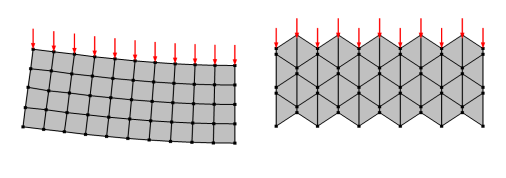

|
If Automatic hourglass stabilization is selected, no stabilization is added when serendipity shape functions are used for the displacement field.
|
|
•
|
<phys>.Wstb, a field showing the stabilization energy density. Note that values are extrapolated from the true quadrature points.
|
|
•
|
<phys>.Wstbavg, a mesh-element average of the variable <phys>.Wstb. This variable is not available for layered shell features.
|
|
•
|
<phys>.Wstb_tot, the total amount of stabilization energy in the model.
|